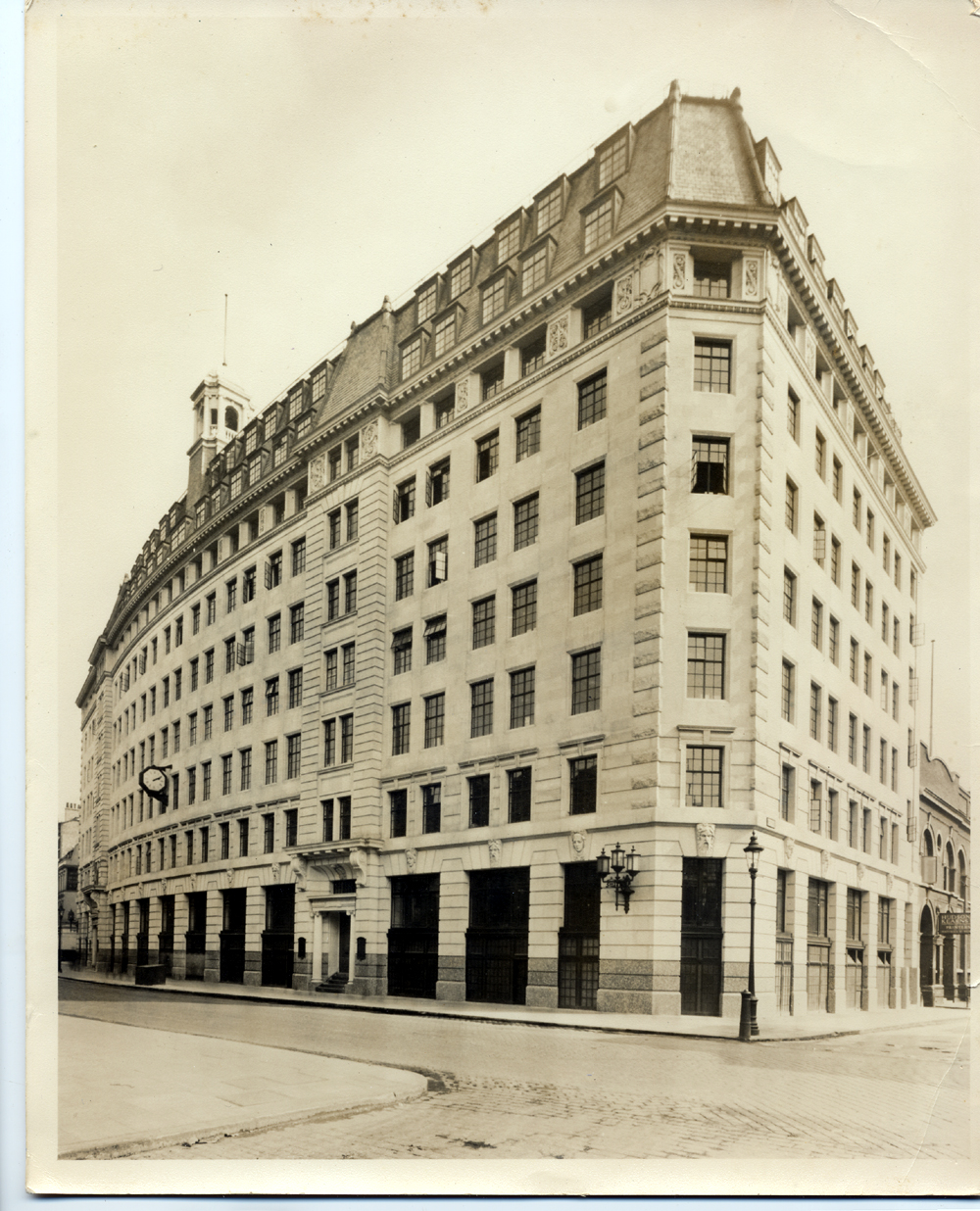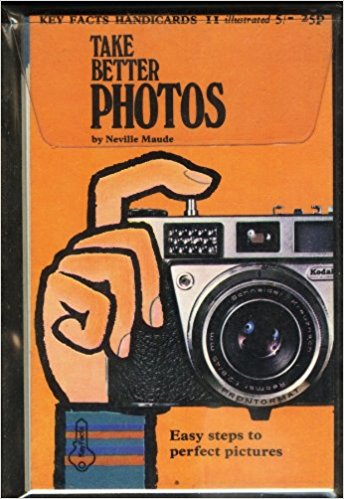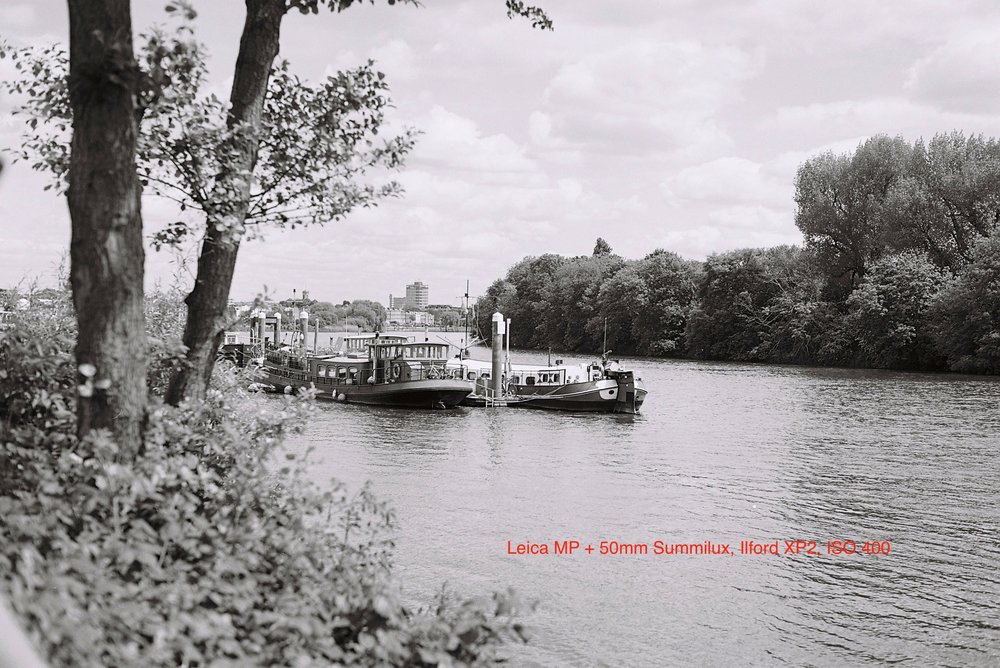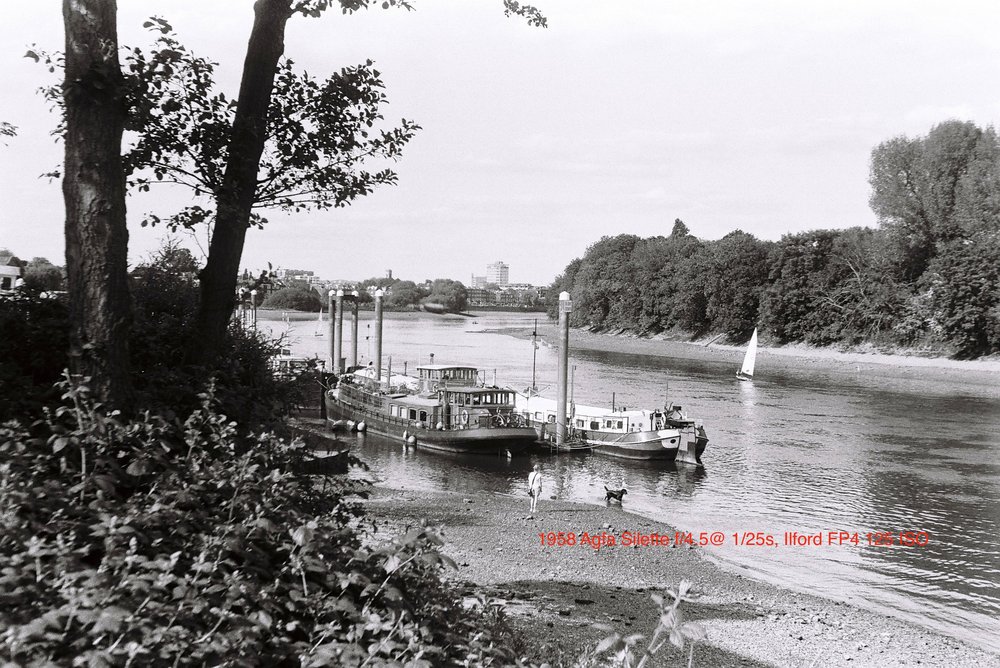
John Shingleton’s reminiscences of the day of Winston Churchill’s funeral and his mention of the camera he used on that day prompted me to mention the camera I owned at that time — an Agfa Silette which I had bought three years previously in 1963. It was my first “proper” camera. I covered this in detail back in 2013 and I thought current readers (there are a lot more of you now than there were then) would welcome a replay. So here it is…. My first camera.
Originally published on MacFilos on 31 May 2013

Two weeks ago, at the photo fair at the Royal Horticultural Hall in Victoria, I came across a good example of an Agfa Silette 35mm camera. I was reminded that my first proper photographic tool was a Silette, one of a long-running range of precision cameras made between 1953 and the early 70s. This particular example was older than mine (which I remember had a built-in light meter) but it was a snip at £15. Since then I have picked up another version, also made around 1958, in near mint condition. Bang goes another £40.
Nostalgia

This is all nostalgia, but it is a revelation to see how well built and durable these Agfa fixed-lens cameras are. One has a 45mm lens, the other a 50mm, both with a fast-for-the-day maximum aperture of f/2.8. Seeing them on my desk got me thinking. I decided to track down an Agfa identical to the one I bought back in the sixties. My first real camera.
Trouble is, I cannot remember which model I am looking for. A few years ago I saw the original receipt and put it “somewhere safe”. It might have given a clue to the specification. Of course I can no longer find it. Not discouraged, I turned to a stack of bank files from the 1960s (my loft is a wondrous place with everything catalogued in Bento) and soon found the statement showing the cheque I had issued to pay for the camera. [Note: Bento, a database application published by Filemaker, went belly up shortly after this article was published and my database now resides in DevonThink Pro.]

Fifty years ago
The date was 13 July 1963 and I suspect I bought the camera with the money I received for my birthday a few days before. At the time I was a rookie technical journalist working at Dorset House, Waterloo, which was then a hotbed of magazines ranging from Motor Cycle (my employer) to Autocar, Flight and Amateur Photographer. All, with the exception of my old periodical, are still in business although probably under different ownership and certainly no longer at Dorset House.
I had taken advantage of my inside contacts and descended two floors to the home of Amateur Photographer. There the resident technical editor, the ever-helpful and knowledgeable Neville Maude ARPS, considered my impecunious plight and my need for a camera that would be good enough, in emergency, to produce publishable results.
Neville came down in favour of the Agfa Silette which, I suspect, was the Fuji X100S of its day, and headed all the charts of desirability. I couldn’t afford a Leica by any stretch of the imagination, so the Agfa Silette was apparently the obvious choice. But with the imprimatur of no less an expert than the tech editor of AP, I decided I couldn’t go wrong.
Armed with an introduction from the hallowed offices of AP, I went to the Westminster Photographic store in The Strand, just across Waterloo Bridge from my Stamford Street office. As a staff member I was entitled to a discount and I returned to the office with a brand-new Silette and brown leather case. Wasn’t I just proud? [Note: I used the camera for about four years until graduating to a Pentax and several of my efforts were published in Motor Cycle magazine, although I was careful to avoid treading on the toes of the staff photographers whose real job this was]

I see from the bank statement that I paid £25 12s 5d, which was no paltry sum in those days. It was more than two weeks’ wages and without my birthday money I would never have afforded it. (Note: £25 12s 5d is 25 pounds, twelve shillings and fivepence, roughly £25.65 in today’s decimal currency)
I couldn’t wait to shoot my first roll of ISO 125 Ilford and mail it to Paragon in Brighton. The cost, as you see from the statement above, was 13s 3d for developing and printing. After 50 years I cannot recall whether this was for one film or two, but 13s 3d would now be around £11. These days, with no-cost digital snapping, we have it easy.
Cub reporter
.jpg)
I also see from the statement that I was earning £46 a month, now equivalent to around £1,100. In wage terms, therefore, the Agfa cost about £500 in today’s money
That’s a big sum for a young cub reporter, even today, and I cherished that little camera. It was such a valuable asset that I took out a dedicated all-risks insurance policy to cover the £25 should I lose the beast.
Above: The same scene taken with a modern Leica MP film camera and 50mm Summicron lens, value around £5,000 (top) and the Agfa Silette with its built-in lens, value £15 (bottom)
Precision engineering


Both these old cameras are in excellent condition, a testament to the precision workmanship at Agfa’s Munich factory and to the quality of the materials. The lens housings and engravings, in particular, are like new. Most of today’s plastic-bodied popular cameras will hardly survive ten years, let alone fifty. They built ’em to last in those days. I have no idea what it would cost today to produce a camera to the same specification and quality as these ancient Silettes. The retail price would almost certainly be well over £2,000 simply because, as with a modern Leica film camera, production is labour intensive and specialised.
The surprising thing is how modern they both look. Today’s retro-chic fashion has gone back in time to meet the Agfa half way. Another odd thing is that there are no strap lugs on either camera. I suppose a case with attached strap was an essential accessory; I assume that luglessness was normal practice on cheaper cameras of this sort at the time, although Leicas and many other cameras had them from the early 1930s.
The camera I bought for £15 has a simple viewfinder which offers no help with framing. The other, higher specced, Agfa has a second light window and a very serviceable bright line finder to help with picture composition. While neither has any means of measuring exposure, both have coupled speed and aperture dials so you can agree an exposure value and then change aperture and speed in unison without losing the relationship for correct exposure.
In those days it was either guesswork, and it is surprising how easily an experienced user can anticipate the correct settings, or reliance on an external light meter. As I said, the Silette I bought in 1963 had a built-in light meter so I had no direct experience of flying by the seat of my pants.

Quest
This has been something of a detective story but I am encouraged to keep it going. I have hopes of finding the original receipt and, even, the insurance policy I arranged to guard against loss. I can visualise both documents and they are in the house somewhere: By systemic failure they are absent from the otherwise comprehensive database. It is just a matter of searching and, probably, they will surface when I have given up hope.
My quest now is to identify and buy a copy of this very camera I treasured in 1963 and for a good few years afterwards. [Note: I soon lost interest and moved on to more interesting quests]. There are so many Agfa Silette models with various shutters, features and housings that it is a difficult task.
When I do see the model, the primordial depths of memory will probably click over. Meanwhile, I am planning an unscientific shootout between my two Agfas and the Leica MP with a 50mm Summicron (see photos above). Today I picked up a couple of rolls of Ilford FP4 B&W film, the same 125 ISO stock I fed into my original Agfa in 1963. It all feels a bit strange, rather like going back in time.
This nostalgia can become chronic and I am already thinking of buying a similar-aged Leica [thus began the slippery slope]. Back then I suppose a Leica 35mm camera would have cost upwards of £125, a phenomenal sum which I could never have afforded. Now, with luck, an early ’60s M3 is within my budget. [Note: It was, see reference above to slippery slopes — cue in Leica I, Leica III, M3, M2, M4, M6, MP, M7, not to mention the odd digital or two].
See also: Back to life after 50 years, the first roll of film
_____________



When the shutter button moved to the right of the lens with the LK model it also gained a design flaw that you need to understand. As you depress it the first click sound is NOT the shutter – it is the lock against a double eposure. Continue to press further to the bottom of its movement and then the shutter fires.
Forget that and lots of unexposed frames appear. Follow it through and the camera near always dips to the right as you take a shot. It is very frustrating !
The earlier models with the top shutter button had a much sweeter mechanism. I have had and used both.
In good light and with Kodachrome 25 and 64 they made great photos. The only great advantage I had moving to an OM 1 was better ability to close focus and interchangeable lenses. But I agree – Agfa Silettes are a good vintage buy if you want to USE them and not just hold them !! Trouble is the loss of cheap UK Poundland 35mm film is killing film photography. Two rolls of 36exp Kodak Gold in 2024 plus D&P is the same cost as an excellent condition Canon or Lumix CMOS sensor digicam on eBay.
I bought my AGFA Silette 1 in 1968 and took it on a hitch hiking holiday .From Shrewsbury to Imingham caught a ferry to Goteborg (southern Sweden) . Up to Oslo ,then to Bergen and back down to Karlstad over to Stockholm ,down to Malmo ,caught the ferry to Copenhagen. On to Hamburg,Rotterdam ,Amsterdam and then to Ostend,took nearly 6 weeks. Great shots all the way,one in Stockholm ,early evening .held the shutter open with a view of a motorway coming out of the city. Won second prize in a competition. Sadly I intend to sell it now ,it hold a lot of great memories.
Earning a handsome £2.00 per week as a photographic apprentice I had to save up for six months to afford this camera. You could get a decent, modern second hand car for the price of a Leica then and my first car, a 1934 Morris Eight, cost me the same price as the Silette did in 1960.
My first camera was the ‘luxury’ model Silette with the Solinar lens. It cost £24.10/-, three Pounds more than the standard Apotar lens version in 1960. Its performance was outstanding, even with front cell focusing. Using Panatomic-X film developed in Rodinal I could get grainless 20×16 prints from the negatives. Those amateur cameras of the 1960s are quite under-rated.
I agree. My first Silette arrived in 1962 and I paid £25, with a discount from my employers, the publishers of Amateur Photographer. The magazine’s technical editor recommended it as the Best Buy in its price range. At the time is was about one sixth the cost of the Leica M3.
I think I recall reading this original article at some point. Great work , Mike. And it has reminded/inspired me to get an Ambi Silette out of storage next time I’m sorting out the garage. The Ambi has interchangeable lenses and I came across an almost complete kit one day. I really should take a look at it and run some film.
Jason.
It is nice to read an article about a camera that existed before I was even in a position to be genetically available to the human race (sorry guys). However are you sure you are not from Yorkshire? Why else would you keep a bank statement from the 60’s? I am super impressed.
I for one am happy to read more about camera’s I never knew existed by people who owned and used them.
Dave
No, I’m from Lancashire. We are just as bad!
Ha ha ha – I know, Wigan. I remember you mentioning it at some point. But hey, you could join Wayne on the honorary Yorkshire man’s list.. 🙂
My potential-father-in-law enjoyed choosing an Agfa Silette LK as my first real camera a long time ago (he did spend a lot more time manually grinding a lens in order to build his own reflector telescope!). The Silette LK now sits on a shelf with my daughter-in-law’s collection of classic film compacts.
Close comparison of your b&w barge shots Mike, shows just how good that little Agfa lens was.
Wayne you have my utmost respect, for being better off out of the Fuji deal.. read my comments on Johns article.
Dave S
Wayne, I doubt that the owners of those very expensive “house boats” moored at the pier would appreciate the description “barges”. Fortunately, they are a perennial delight as they move up and down on the Thames tide and reflect the changing seasons. They are one of my habitual subjects when using new lenses and cameras, consequently I can use them to illustrate different equipment using the same scene.
I also had an Agfa Isolette with an Apotar lens which my nephew in Salt Lake City, Utah still uses. The Isolette had been a straight swap in a Peterborough junk shop for a relatively soft focus Zeiss Contina (scratched and bloomed lens) … originally acquired in 1976 via a £1 PX deal at City Camera Exchange for a half-frame Canon Dial with a faulty clockwork motor. The Isolette was a wonderful camera especially when used with an Agfa bulb flash (far more powerful at that time than a budget price electronic flash) with a layer of Kleenex tissue over the relatively large flash reflector, using Tri-X film, for contrasty and sharp office party photos. Some colleagues would ask, "When you gonna buy a proper modern flashgun and some colour film?" But most colleagues liked the B&W photos. ASA 400 colour film in the mid 1970s was grainy … but Tri-X always worked well … processed by a well known but premium price D&P lab advertised in the back of AP magazine. Happy days when enthusiast ‘budget camera’ photographers who followed AP’s Victor Blackman and Ron Spillman, using ‘old fashioned gear’ (as distinct from consumer market Kodak 126 and 110 Instamatics – and a few years later, the infamous Kodak Disc cameras) needed to think on their feet before guesstimating focus distance and aperture and pressing the shutter … to be followed by a swift flash bulb change. Only 12 photos per 120 film but they were ‘well considered and properly composed’ … unlike the multiple frame efforts of today’s ‘never had it so easy’ photographers. The Isolette was followed by my first SLR … a s/h £90 Yashica TL Electro with a propensity for shutter jam … eventually sorted by Photax, the importers.
The Zeiss Contina is a great buy today – with a clean lens the pictures are outstanding. Build quality is excellent and the frustration is only trying to find lenshoods and yellow filters to fit the strange lens fronts! My most recent eBay one cost <£8 with post and still looks beautiful and has that great 1950-60s Zeiss style and finish.
My first camera was also an Agfa, but one built in the 1930s. It was an Agfa Speedex ‘0’ fitted with an f/3.9 Solinar lens, compur shutter and flip-up folding Albada viewfinder with remarkable framing ability. It cost me £10 used from Dollonds in New Bond Street in the late 1940s and required quite a lot of savings over months of anticipation. It took eight full-frame 127 roll-film pictures of extremely good quality. Sadly I didn’t keep it, using its value to upgrade to a newer camera at a time when new equipment was only available to professional photographers.
I believe it was quite a rare model, probably a smaller version of the ubiquitous larger format Agfa Billy range of rollfilm cameras. Examples of the Afga Speedex ‘0’ rarely surface for sale and I cannot find a picture of one.
Mike: Are those the same barges…? Good luck on your quest!
Oooops. I’m coming from a different place. I bought a IIIf to take shots in the same place my dad did with his….
Mike, I am in awe that you still had bank statements 50 years later. The prices you paid in recent times for other Agfas were about right. There are many different variations of the Silette and Super Silette around and prices also vary with condition. A well known collector of my acquaintance speaks very highly of the older Agfa models. In 1940 my father paid 9 guineas for a Super Baldina (the receipt for that has appeared on Macfilos). At the same time, a Leica II with a 50mm Elmar cost £27-17-0. Over the period of the war the price of German cameras more or less doubled. In 1938 a Leica IIIb with Summar cost £43-0-0, whereas in 1949 the equivalent IIIc with Summar cost £86-0-0. I have the catalogue of a Dublin dealer ( basically the Leitz London 1938 catalogue) which has the 1949 prices written in.
By the 1960s prices had risen further, particularly with the introduction of the M models. I have the 1961 Leica catalogue, but it does not contain prices which seem to have been on a separate sheet linked with serial/part numbers. I would agree with your estimate of about £125 for a Leica with lens at that time, indeed it could have been more, possibly around £150. My father could not have risen to either the £27-17-0 for a Leica II or, even more so, the £43 for a III in 1940. He may, however, have used ‘birthday proceeds’ for the purchase of the camera which took place about 4 weeks after his 24th birthday. The camera and a few other items were the only things that I took from my father’s house just before it was sold about 20 years ago. It took me until this year to have it repaired and the photos from the repaired camera have appeared on Macfilos. I liked it so much that I bought another one from the same period with a Schneider f2 lens and it too has gone off for a CLA.
Those early German cameras were very well made and can be repaired today. My father’s Super Baldina has exactly the same shutter as the much more expensive Compur Leica and, apart from occasional slow speed issues, those shutters seem to last much longer than the cloth shutters in Leicas etc. One of the attractions of such cameras is that all that is needed in most cases to start using them again is a service and a roll of film. David is right about the Leica I and II not having eyes for straps (although 2 of mine had such eyes added by previous owners), but in those days most people also got a nice leather ever ready case with a strap to carry the camera. Properly looked after, an Agfa Silette will out-live any of today’s digital cameras and will continue to provide its, not so out of pocket, owner with great photos and great user pleasure for many years to come.
William
Thanks for the extra information on prices through the years, William. As for the bank statements, it’s all down to my Fujitsu scanner which gobbles yo any bit of paper that crosses my desk. Some time ago I cane across a pile of statements from the 60s and 70s, so I ran them all through the scanner (with OCR) before destroying them. So now I can search for any details from those years. Anal retentiveness.
MY long gone Ambi-Silette was an inter-changeable lens model.
As I remember it 58 years ago, it accepted three lenses.
Now at the age of 82, I use an Olympus MD10 series camera with one lens
that covers the same range.
Mine was a roll film Agfa Isolette with a Compur Rapid shutter which I bought new sometime in the mid 1950’s mostly because it had a top shutter speed of 1/500 sec, which I needed for action photography, it only had the less expensive Apotar lens as I could not afford the more expensive Solinar, but it was still good enough to go on to literally earn me thousands of pounds. It was and is special and I am glad to say I still have it, and whats more many of the pictures I took with it all of those years back are still selling today. Don
"..I assume that luglessness was normal practice on cheaper cameras of this sort at the time, although Leicas and many other cameras had them from the early 1930s." ..Not the Leica I and II; lugs on Leicas began only with the III models, I think.
Those old German cameras were beautifully made. Mine, which I still have, is a Voigtländer Vito B, complete with case, instructions and the matching hot shoe coincident rangefinder. In the Agfa department, I still have an Agfamatic 4000, which I used to take everywhere with me. It’s a very basic camera, and the 110 cassette film system wasn’t very convenient, as I processed all my own film, which was mostly 35mm. The flashcubes were very expensive, as I recall.
Vito B: I went all round the Middle East in 1961-62 with mine. It took marvellous slides on Agfacolour which unfortunately I didn’t get digitised before the colours faded. Such a lovely solid feel in the hands – I still have it, waiting my re-entry into film.